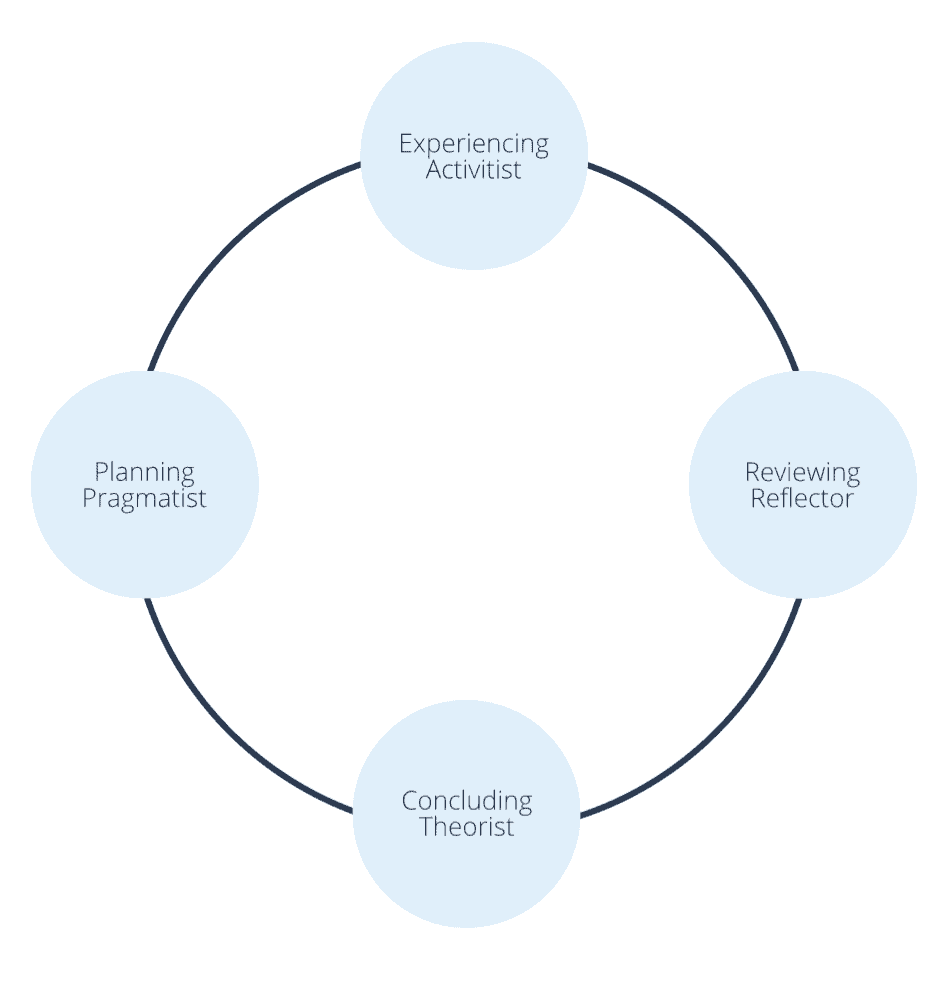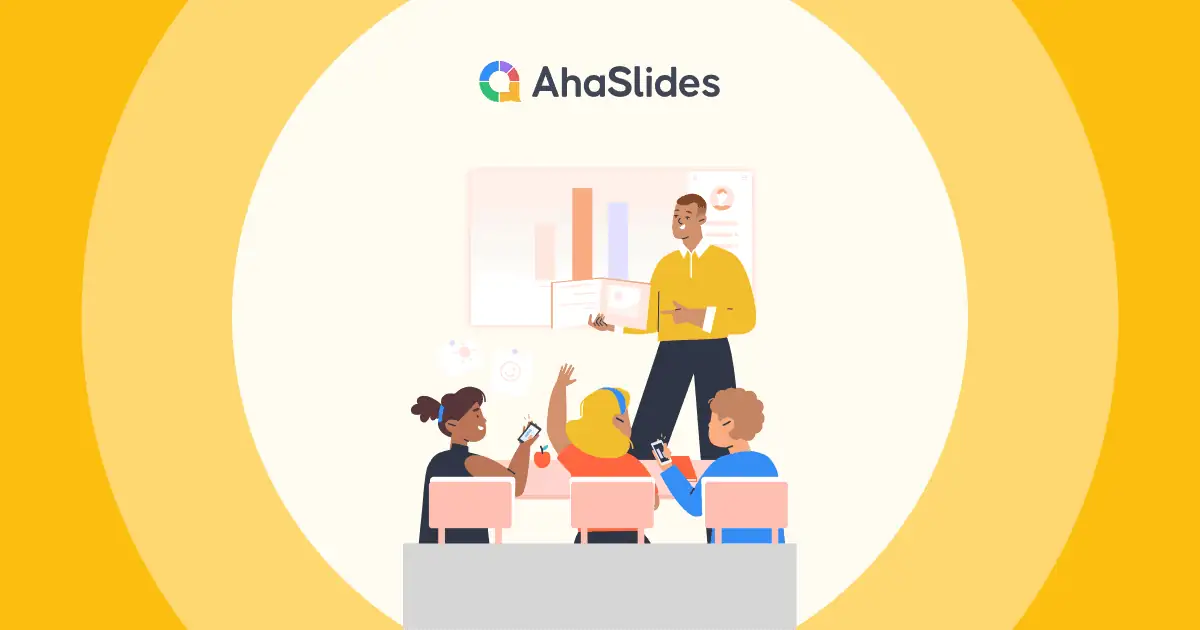What are Honey and Mumford Learning Styles?
Are you curious about how others start to learn something? Why can some people remember and apply everything they have learned to practice? Meanwhile, some are easy to forget what they have learned. It is believed that being aware of how you learn can help your learning process be more productive, and it is more likely for you to get higher study performance.
To be honest, there is no single learning style that works best in almost all cases. There are plenty of learning methods that work best depending on the task, the context, and your personality. It is important to take care of your learning preference, to understand all possible learning methods, which works best in which situation, and which one works best for you.
It is the reason why this article introduces you to a theory and practice of learning styles, in particular, Honey and Mumford learning styles. This theory can be helpful both in school and workplace contexts, whether you are pursuing academic success or skills development.

Table of Contents
- What are Honey and Mumford Learning Styles?
- What is the Honey and Mumford Learning cycle?
- How Honey and Mumford Learning Style is beneficial
- Examples of Honey and Mumford Learning Styles?
- Tips for Teachers and Coaches
- Frequently Asked Questions
- Final Thoughts
Tips for Better Class Engagement

Start in seconds.
Get free templates for your next class. Sign up for free and take what you want from the template library!
🚀 Grab Free Account
What are Honey and Mumford Learning Styles?
According to Peter Honey and Alan Mumford (1986a), there are four distinct styles or preferences that people utilize while studying. In correspondence with learning activities, there are 4 types of learners: activist, theorist, pragmatist, and reflector. As different learning activities are suited to different styles of learning, it is vital to identify which is the best match for the learning style and the nature of the activity.
Check out the characteristics of the four Honey and Mumford Learning Styles:
| Activist - learning through hands-on experiences, involvement in activities, and immediate participation - trying new things, taking risks, and engaging in practical tasks - learning best in interactive and experiential learning environments | Pragmatist - focusing on the practical application of learning - understanding how concepts and theories can be applied in real-world settings - learning best through practical examples, case studies, and hands-on experiences |
| Theorist - being inclined toward abstract concepts, theories, and models - understanding the underlying principles and frameworks that explain phenomena - learning best through logical reasoning, analyzing information, and making connections between ideas | Reflector - being likely to observe and think about experiences before taking action - like to analyze and reflect on information, and they learn best by reviewing and considering different perspectives - enjoying structured and well-organized learning opportunities |
What is the Honey and Mumford Learning cycle?
Based on David Kolb’s Learning Cycle which pointed out learning preferences can change over time, Honey and Mumford Learning cycle described a connection between the learning cycle and learning styles.
To become more effective and efficient learners, you should follow the following stages:
Experiencing
In the beginning, you are actively engaged in a learning experience, whether it's participating in an activity, attending a lecture, or encountering a new situation. It is about gaining first-hand exposure to the subject matter or task at hand.
Reviewing
Next, it consists of a range of tasks such as analyzing and evaluating the experience, identifying key insights, and considering the outcomes and implications.
Concluding
In this stage, you draw conclusions and extract general principles or concepts from the experience. You try to figure out the underlying principles behind the experience.
Planning
Finally, you can use the knowledge and insights in practical situations, develop action plans, and consider how they will approach similar situations in the future.

How Honey and Mumford Learning Style is beneficial
The central approach of Honey and Mumford Learning Styles is driving learners to understand different learning styles. By recognizing their learning style, learners can identify the most effective learning strategies for themselves.
For example, if you identify as an activist learner, you might benefit from hands-on activities and experiential learning. If you lean towards being a reflector, you may find value in taking time to analyze and reflect on information.
Understanding your learning style can guide you in selecting appropriate study techniques, learning materials, and instructional methods that resonate with your style.
Additionally, it also fosters effective communication and collaboration, facilitating better interaction with others and creating more inclusive learning environments.
Examples of Honey and Mumford Learning Styles
Because Activist learners enjoy hands-on experiences and active participation, they can choose learning activities as follows:
- Participating in group discussions and debates
- Engaging in role-playing or simulations
- Taking part in interactive workshops or training sessions
- Conducting experiments or practical experiments
- Engaging in physical activities or sports that involve learning
For Reflectors who made decisions based on careful consideration, they can implement the following activities:
- Journaling or keeping reflective diaries
- Engaging in introspection and self-reflection exercises
- Analyzing case studies or real-life scenarios
- Reviewing and summarizing information
- Participating in reflective discussions or peer feedback sessions
If you are Theorists who enjoy understanding concepts and theories. Here are the best activities that maximize your learning outcomes:
- Reading and studying textbooks, research papers, or academic articles
- Analyzing theoretical frameworks and models
- Engaging in critical thinking exercises and debates
- Engaging in lectures or presentations that emphasize conceptual understanding
- Applying logical reasoning and making connections between theories and real-world examples
For someone who is Pragmatists and focuses on practical learning, these activities can benefit you at most:
- Participating in hands-on workshops or training programs
- Engaging in real-world problem-solving or case studies
- Applying knowledge in practical projects or assignments
- Undertaking internships or work experiences
- Engaging in experiential learning activities, such as field trips or site visits

Tips for Teachers and Coaches
If you are a teacher or coach, you can make use of the Honey and Mumford Learning Styles Questionnaire to make an exceptional learning experience for students and trainees. After identifying the learning styles of your students or clients, you can start tailoring instructional strategies to accommodate different preferences.
Plus, you can combine visual elements, group discussions, hands-on activities, live quizzes, and brainstorming sessions to make your class more interesting and engaging. Among many educational tools, AhaSlides is the best example. It is a popular tool that many experts recommend when it comes to designing classroom and training activities.

Start in seconds.
Get free templates for your next class. Sign up for free and take what you want from the template library!
🚀 Grab Free Account
Frequently Asked Questions
What is the purpose of the Honey and Mumford Learning Questionnaire
Basically, the Honey and Mumford Learning Styles Questionnaire serves as a tool for self-reflection, personalized learning, effective communication, and instructional design. It supports individuals in understanding their learning preferences and helps create environments that facilitate optimal learning experiences.
What Does The Learning Styles Questionnaire Measure?
The Learning Styles Questionnaire measures an individual's preferred learning style according to the Honey and Mumford Learning Styles model. The questionnaire is designed to assess how individuals approach learning and engage with educational activities. It measures the four dimensions including Activist, Reflector, Theorist, and Pragmatist.
What is the critical analysis of Honey and Mumford?
As it raises doubt about the sequence of the learning cycle as depicted by Honey and Mumford, Jim Caple and Paul Martin did a study to examine the validity and applicability of the Honey and Mumford model in educational contexts.
What is the Honey and Mumford reference?
Here are citations of Honey and Mumford Learning Styles and Questionnaire.
Honey, P. and Mumford, A. (1986a) The Manual of Learning Styles, Peter Honey Associates.
Honey, P. and Mumford, A. (1986b) Learning Styles Questionnaire, Peter Honey Publications Ltd.
What are the 4 learning styles theories?
The four learning styles theory, also known as the VARK model, proposes that individuals have different preferences for how they process and absorb information. The 4 predominant learning styles include Visual, Auditory, Reading/Writing, and Kinesthetic.
What is a pragmatist method of teaching?
Pragmatism in teaching is an educational philosophy that focuses on the practical, real-world application of knowledge and skills. The role of education is to help students to grow into better people. John Dewey was an example of a pragmatist educator.
How do Honey and Mumford support professional development?
The Honey and Mumford learning styles model supports professional development by helping individuals identify their preferred learning styles, enabling them to select training programs, workshops, and learning opportunities that align with their styles.
Final Thoughts
Remember that learning styles are not rigid categories, and individuals may exhibit a combination of styles. While it's helpful to know your dominant learning style, don't limit yourself to just one. Experiment with different learning strategies and techniques that align with other learning styles as well. The key is to leverage your strengths and preferences while remaining open to alternative approaches that enhance your learning journey.
Ref: Businessballs | Open.edu








